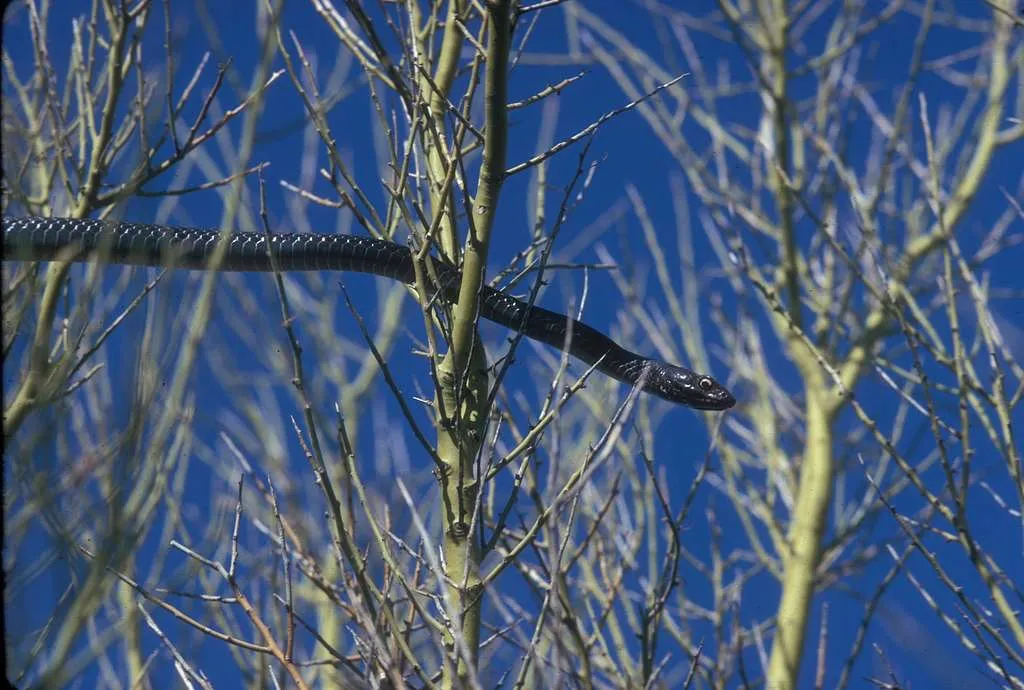
It is now winter, and most of the reptiles are underground so I am going to have to get creative. This column is about snakes in trees, and how to tell who’s who.
First of all, though unusual, any snake could find itself in a tree, even the least arboreal (arboreal means “lives in trees”). If you happen to see a snake in a tree, make sure to snap a photo because it may be a new behavior. Secondly, the “trees” around here are a bit wistful, but you know what I mean.
By far, the most common snakes to see in trees in this area are coachwhips. They are long, fast snakes that come in a variety of colors; around here, they are mostly black. I have witnessed coachwhips at the tops of trees, out on thin branches, hunting birds and much more, showing they are quite accomplished climbers. I have even seen them at the top of tall palm trees with no nearby vegetation.
Another type of arboreal snake in the area — although much rarer — is the Baja California Striped Whipsnake. Relatives of the coachwhip, these snakes are elusive and prefer wetter habitats, meaning they are mostly found in the mountains. They are black with yellow stripes, not to be confused with patch-nosed snakes, which can be black and cream-striped, and live throughout LV/ES. As for the patch-nosed snake, I have personally seen one in a tree, although they are not known to spend much time suspended in vegetation.
A few more snakes that you may see in trees include: Cape Gopher Snakes, which sometimes raid birds’ nests; Baja California Rat Snakes, which are quite rare but spend a good amount of time in trees; California Kingsnakes, which are known to hang out off the ground; and lyre snakes, who enjoy treetop life on occasion as well. chancestevens123@icloud.com